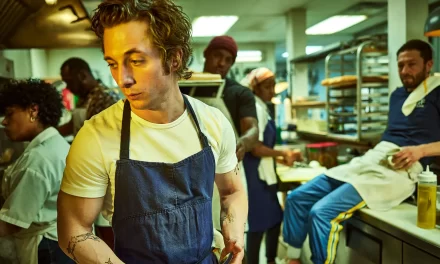’ve spent what little time I’ve had recently on the ADAPT TV History project trawling through the BBC Internet blog on topics to do with innovation and social media (I say what little time I have, as for heads of department like me, time is increasingly dominated by TEF (let alone REF), consumer compliance law and our new duties to prevent studies from being ‘drawn into terrorism’).
In any case, this has hampered my ability to get a lot of interviews done, so I thought I’d share a few observations from the 73 posts on Innovation and the 12 on Social Media from the BBC’s Internet blog (disclosure: I’ve not read all 73 posts, just those that connect to social media in some way). For those who’ve never used it, the BBC’s Internet Blog is a treasure trove of information about the BBC’s digital strategies, current product developments and a history of what has/hasn’t taken off. We could/should all make more use of it in our research.

Firstly, it’s worth noting that all of the blog posts on the BBC Internet blog about social media at the Corporation are at least 2 years old. Rather than suggesting that this means social media is no longer important – it indicates how much it has become part of the routine of production.
One of these, from 2013, points to BBC Academy produced materials dealing with the relationship between TV, online and social. An interesting interview with Steven Green, Crimewatch Assistant Content Producer, provides some insight on how social media is integrated into, and changing, television production.
Green discusses how the BBC’s Automatic Page System generates a programme page once a show is confirmed in the schedule, marking the start of social media work around the programme: sending out a “Tweet to link back to this page”.
But what’s particularly interesting is the way in which he describes the process he’s involved in and his place in the production team:
We use a number of content management systems (CMS): iBroadcast, iSite. With those production tools we can get video and text and images from the team and process them and put them on the site. I work closely with an edit assistant who will basically export it from avid to a flip factory that will then convert it into a format that I can then use. … On the day of the live programme, that is when I am at my busiest … I will be working hard getting everything there, checking everything and also checking responses. There is obviously now people talking about the programme on Twitter, and so I’ll be looking at that and passing that on to the production team
Green positions himself as somehow outside of the production team: being handed material to deal and convert for social/online use, and returning material back to the ‘production team’ for them to utilize.
Taking a wider view of the way the BBC talk about social media on the BBC Internet blog, this is indicative of a wider trend. Those people with a responsibility for social media tend to sit outside the television production team – working as engineers, researchers, product managers, audience analysts within the Future Media division or as brand and community managers within marketing departments.
This is a division I’ve noted before in my work on multiplatform. The fact it continues to exist and may have even become routinized to those producers who are more closely aligned – in terms of physicality, timing and content – might suggest how television integration of social media’s into production might be described as auxillary: inside/outside?
Perhaps, however, this is too simple a dichotomy. A recent interview with a former C4 commissioner reminded me of the work people like Paul Grainge, Jonathan Gray, Catherine Johnson and others have done on the promotional surround, which increasingly blurs the boundaries between content and promo. The interviewee spoke about how marketing, new media (as it then was), and television commissioning were all located on the same floor at Horseferry Rd. The intermingling of people and ideas led, he suggested, to innovation and less clear-cut lines between what belonged in/outside conversations about television.
As we go forward this ‘inside/outside’ dichotomy will also be a useful way of thinking about the working lives of those involved in how social media is used in television production.
Dr James Bennett is a Reader in Television & Digital Culture at Royal Holloway, University of London. His work focuses on digital television as well as TV fame.




